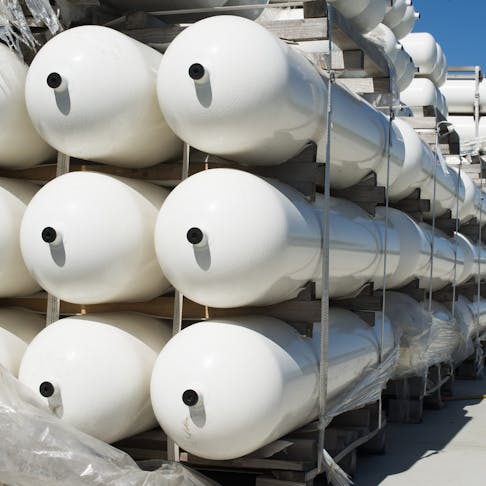
Compressibility: Definition, How It Works, Calculation, and Applications

Compressibility is a fundamental property that characterizes a material's ability to change in volume when subjected to external forces. It is essential in many areas of science and engineering. Investigating compressibility's concept, underlying principles, calculation processes, and wide range of industrial uses can help you better understand it. Compressibility is fundamentally a measurement of a substance's receptivity to pressure or stress, with variable degrees of receptivity being displayed by various substances.
The study of compressibility delves into the molecular and structural aspects that dictate a material's behavior under compression. Engineers and scientists calculate compressibility using mathematical formulas and experimental techniques to design and optimize a wide array of products and processes—from designing efficient engines and hydraulic systems to studying and understanding the behavior of geological formations. Compressibility's applications are as diverse as they are essential.
This article will further discuss compressibility, how it works, how it is calculated, and its applications.
What Is Compressibility?
In essence, compressibility measures how much a substance changes its volume in response to pressure changes. It measures the relative volume change in response to a change in pressure specifically. Compressibility requires a proportional decrease in volume (V 0) when pressure within a constant mass of fluid increases (p > 0). This fundamental characteristic is widely used in the domains of fluid dynamics and thermodynamics and is essential to understanding how materials behave under various conditions.
What Is the Other Term for Compressibility?
Squeezability or sponginess are alternate words for compressibility. These words define how easily a substance or material may be compacted. To describe how easily something may be crushed or squeezed when pressure is applied, one might use the phrase "sponginess" when describing the texture of a sponge, for instance.
What Are the Characteristics of Compressibility?
The coefficient of compressibility, often denoted as β, is a crucial parameter in material science and thermodynamics. It quantifies a material's sensitivity to pressure changes, with higher values indicating greater responsiveness. Typically expressed in units like pascals (Pa⁻¹) or bar⁻¹, it is also temperature-dependent and the reciprocal of the bulk modulus. This coefficient plays a vital role in predicting how substances respond to pressure variations in various scientific and engineering applications.
How Does Compressibility Work?
Compressibility works by a material's molecular or structural response to external pressure. When pressure is applied to a substance, its constituent particles are forced closer together, reducing the space between them. This results in a decrease in volume. The extent of this volume change, quantified by the coefficient of compressibility, varies based on the material's properties. Understanding this behavior is essential in fields like fluid dynamics, in which it helps predict how fluids change under pressure.
What Is the State of Compressibility?
The condition or quality of a material concerning its responsiveness to variations in pressure is known as the state of compressibility. Different materials have different levels of compressibility. It ranges from extremely compressible—at which their volume decreases dramatically under pressure—to almost incompressible—at which the volume varies only slightly under the same pressure variations.
Does Compressibility Occur When Stress Is Applied?
Yes, compressibility occurs when stress is applied. It involves a material's response to the application of stress, resulting in a reduction in volume. This phenomenon can be attributed to particle slippage and reorientation, especially noticeable in materials with low initial densities or under relatively low stress conditions. The degree of compressibility depends on the specific material properties and external stress levels.
To learn more, see our guide on Stresses.
What Is the Importance of Compressibility?
In many fields, compressibility is quite important. It is essential for high-pressure equipment design, reservoir simulation, and material balance calculations in the oil & gas industry. For an accurate reservoir evaluation, a precise understanding of oil fluid compressibility is essential, especially below the bubble point pressure. While compressibility is less important in aerodynamics at slower speeds, it becomes crucial as airflow approaches and surpasses the speed of sound, bringing crucial aerodynamic issues into play in aircraft design.
What Are the Formula and Units for Compressibility?
The formula for compressibility, denoted as β (beta), is expressed as:
β = -1/V (∂V/∂P)
Where:
β = compressibility
V = volume
P = pressure
The units of compressibility vary depending on the system of measurement. In the International System (SI), compressibility is typically measured in pascals per pascal (Pa⁻¹). In other systems, it may be expressed in bar⁻¹ or other equivalent units. These units reflect the change in volume in response to a unit change in pressure. Compressibility is the reciprocal of pressure.
How Is Compressibility Calculated?
Compressibility is calculated by first measuring the initial volume (V₁) of the substance. Then, change the pressure (ΔP) by adjusting the conditions and measure the corresponding volume change (ΔV = V₂ - V₁). Compressibility is determined using the formula β = -1/V (∂V/∂P), where ∂V/∂P represents the change in volume due to the change in pressure.
In general, compressibility (β) is a measure of how a substance's volume (V) changes in response to alterations in pressure (P) while keeping temperature constant.
How Does Bulk Modulus Affect Compressibility?
Compressibility and bulk modulus are mutually exclusive. The inverse of the bulk modulus is compressibility. Low compressibility is a property of materials that have a high bulk modulus, such as steel or diamond. On the other hand, materials with high compressibility, such as gases and rubber, are easily compressed. Based on how they react to pressure changes, chemicals can be categorized using this relationship.
Why Is Compressibility Essential to Understanding the Behavior of Gases?
Compressibility is essential in understanding gas behavior due to its capacity to precisely quantify how gases respond to various pressures. To accurately simulate gas dynamics and phase transitions, knowledge of this feature is needed for forecasting volume changes in gases under various conditions. This enables scientists and engineers to perform accurate calculations and create effective gas-based systems, from constructing combustion engines to comprehending atmospheric phenomena.
What Is the Compressibility of Gas?
A gas's capacity to be compressed at a given temperature, volume, and pressure is measured by its compressibility. Based on molecular size and how a gas reacts to changes in pressure and temperature, this attribute differs among gases.
Are Solids Compressible?
No, solids are not compressible. They have closely packed particles held together by strong intermolecular forces. These forces resist volume changes, making solids rigid and resistant to compression. While there can be very slight compressibility under extreme pressures, it is typically negligible.
Is Liquid Compressible?
No, liquids are generally considered incompressible. Unlike gases, the particles in liquids are close together, limiting their ability to be compressed significantly. While there can be very slight compressibility under extreme pressures, it's practically negligible.
What Are Examples of Compressibility?
Examples of compressibility in daily life include:
- Bicycle Tire Pump: Compressed gas is used to inflate bicycle tires. When you use a bicycle tire pump, you're introducing compressed air into the tire, increasing its pressure and causing it to expand, which results in a firm tire ready for riding.
- Welding: Welding cylinders contain compressed acetylene and oxygen, producing the required hot flame for welding. The gases are stored under high pressure, and when released and ignited, they create the intense heat necessary for fusing metals in welding processes.
- Shaving Cream: The typical ingredients in shaving cream are water, soap or surfactants, and a propellant gas, such as butane or propane. A shaving cream can's button activates the compressed propellant, releasing the contents and producing a foamy lather.
- Oxygen Cylinders: Oxygen for medical and scuba diving use is stored in compressed form. These cylinders contain oxygen gas under pressure, providing a vital supply of oxygen for patients in medical settings and divers underwater.
- LPG Cylinder: Natural gas is compressed for easy storage and transportation in LPG cylinders. Liquified Petroleum Gas (LPG) is compressed into a liquid state within these cylinders, allowing for efficient storage and distribution of this commonly used fuel source in households and industry.
What Are the Applications of Compressibility?
Applications of compressibility include:
- Aeronautics: Understanding air compressibility is vital in aircraft design.
- Fluid Dynamics: Essential for modeling fluid behavior in pipelines, hydraulic systems, and pumps.
- Thermodynamics: Essential for studying phase transitions and the behavior of gases.
What Is the Difference Between Compressibility and Isothermal Compressibility?
The key distinction between compressibility and isothermal compressibility is the context in which they are applied. Compressibility is a general measure of how a substance's volume changes when subjected to pressure variations. In contrast, isothermal compressibility is a specialized parameter that specifically evaluates how a substance's volume responds to pressure changes while keeping temperature constant.
What Is the Difference Between Compressibility and Ductility?
Compressibility measures how a substance's volume changes with pressure, while ductility assesses a material's ability to stretch without breaking under tension. Compressibility applies to fluids, whereas ductility specifically evaluates a solid's behavior under tensile strain, offering distinct insights into material response to different forces.
To learn more, see our guide on Ductility Testing.
What Is the Difference Between Compressibility and Adiabatic Compressibility?
The measurement conditions are the main distinction between compressibility and adiabatic compressibility. Compressibility is a generic measure of volume change in response to pressure, whereas adiabatic compressibility evaluates volume change under adiabatic conditions, in which there is no heat exchange with the environment. Adiabatic compressibility sheds light on how a substance reacts to pressure changes during an adiabatic process in which no loss of heat is allowed.
Summary
This article presented compressibility, explained it, and discussed its various applications and how it works. To learn more about compressibility, contact a Xometry representative.
Xometry provides a wide range of manufacturing capabilities and other value-added services for all of your prototyping and production needs. Visit our website to learn more or to request a free, no-obligation quote.
Disclaimer
The content appearing on this webpage is for informational purposes only. Xometry makes no representation or warranty of any kind, be it expressed or implied, as to the accuracy, completeness, or validity of the information. Any performance parameters, geometric tolerances, specific design features, quality and types of materials, or processes should not be inferred to represent what will be delivered by third-party suppliers or manufacturers through Xometry’s network. Buyers seeking quotes for parts are responsible for defining the specific requirements for those parts. Please refer to our terms and conditions for more information.
